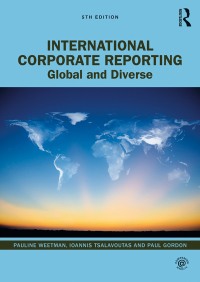Emerging vs. developed equities VB/E/S 12 month foward P/E ratio MSCI developed 115 MSCI emerging 96 30 25 20 15 10 nem 5 04 94 96 00 08 10 12 Source: Thomson Reuters Datastroom Reuters graphic Scott Barber 1/27/2012 9. The figure above shows data on price-earning ratios for developed and emerging economies. Using Gordon's growth model answer the following questions: a. Suppose that the rate of growth of dividends is larger for emerging economies Based on the average values of the price- earning ratios, what do we know about the required rates of return? b. By 1994, the price-earning ratio was higher for emerging markets. In the following years, this relationship is clearly reversed. Provide an explanation in terms of changes in dividends' growth rate and required rate of return. 10. Consider a coupon bond that pays $50 coupons in two consecutive years (years 1 and 2) and pays its face value of $500 at the end of the second year (year 2). Assume an interest rate of 10% for these two years. a. Given this information, compute the price of the bond on year 0. 10. Consider a coupon bond that pays $50 coupons in two consecutive years (years 1 and 2) and pays its face value of $500 at the end of the second year (year 2). Assume an interest rate of 10% for these two years. a. Given this information, compute the price of the bond on year 0. b. Consider an increment of the interest rate from 10% to 15%. Suppose an investor that purchased a bond on year o, before the change in the interest rate, and sold the bond on year 1, after cashing the first coupon and after the change in the interest rate. Which is the rate of return for this one year investment? Consider the same situation as before with a single difference. In this second case, the coupon bond pays $50 coupons in three subsequent years (years 1, 2 and 3) and pays its face value of $500 at the end of the third year (year 3). The bond is bought in period 0 and sold in period 1, after the paid its first coupon. As in the previous exercise, consider an interest rate of 10% at the time in which the bond is purchased and an interest of 15% at the time the bond is sold. c. Which is the rate of return for this one year investment? d. Comment cases "b" and "c" referring to the concept of "interest-rate risk. Emerging vs. developed equities VB/E/S 12 month foward P/E ratio MSCI developed 115 MSCI emerging 96 30 25 20 15 10 nem 5 04 94 96 00 08 10 12 Source: Thomson Reuters Datastroom Reuters graphic Scott Barber 1/27/2012 9. The figure above shows data on price-earning ratios for developed and emerging economies. Using Gordon's growth model answer the following questions: a. Suppose that the rate of growth of dividends is larger for emerging economies Based on the average values of the price- earning ratios, what do we know about the required rates of return? b. By 1994, the price-earning ratio was higher for emerging markets. In the following years, this relationship is clearly reversed. Provide an explanation in terms of changes in dividends' growth rate and required rate of return. 10. Consider a coupon bond that pays $50 coupons in two consecutive years (years 1 and 2) and pays its face value of $500 at the end of the second year (year 2). Assume an interest rate of 10% for these two years. a. Given this information, compute the price of the bond on year 0. 10. Consider a coupon bond that pays $50 coupons in two consecutive years (years 1 and 2) and pays its face value of $500 at the end of the second year (year 2). Assume an interest rate of 10% for these two years. a. Given this information, compute the price of the bond on year 0. b. Consider an increment of the interest rate from 10% to 15%. Suppose an investor that purchased a bond on year o, before the change in the interest rate, and sold the bond on year 1, after cashing the first coupon and after the change in the interest rate. Which is the rate of return for this one year investment? Consider the same situation as before with a single difference. In this second case, the coupon bond pays $50 coupons in three subsequent years (years 1, 2 and 3) and pays its face value of $500 at the end of the third year (year 3). The bond is bought in period 0 and sold in period 1, after the paid its first coupon. As in the previous exercise, consider an interest rate of 10% at the time in which the bond is purchased and an interest of 15% at the time the bond is sold. c. Which is the rate of return for this one year investment? d. Comment cases "b" and "c" referring to the concept of "interest-rate risk








